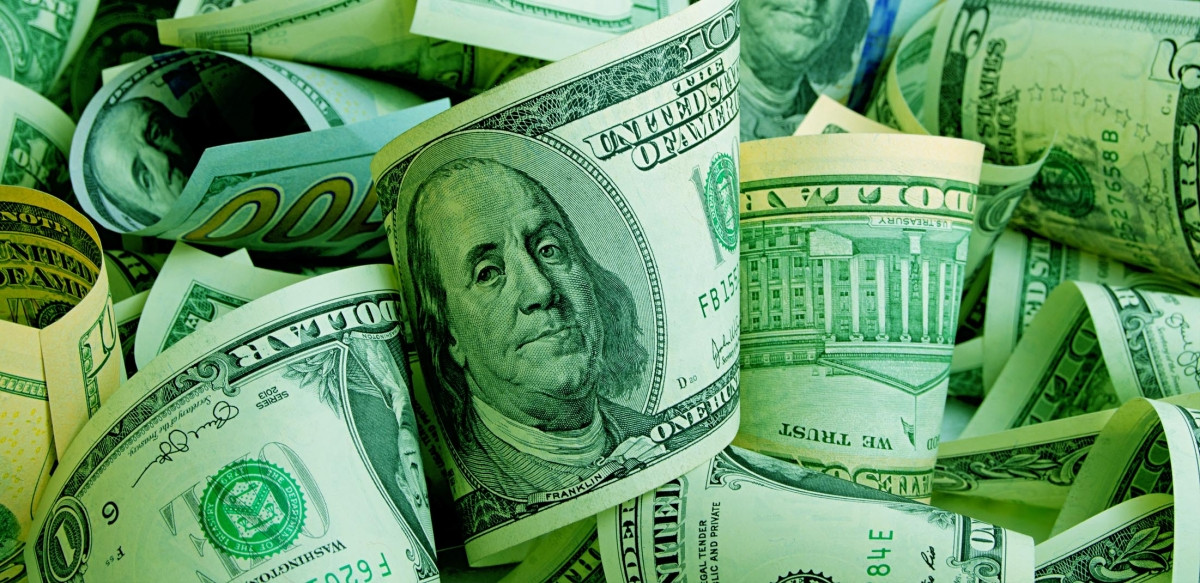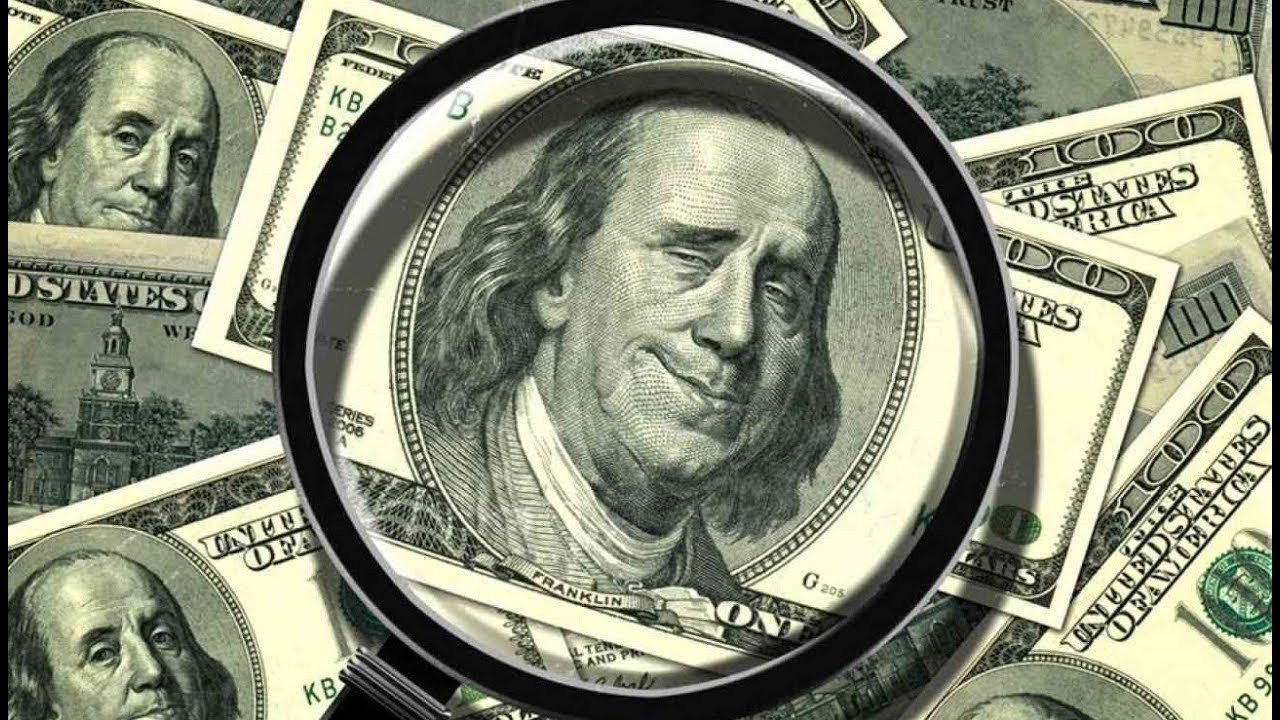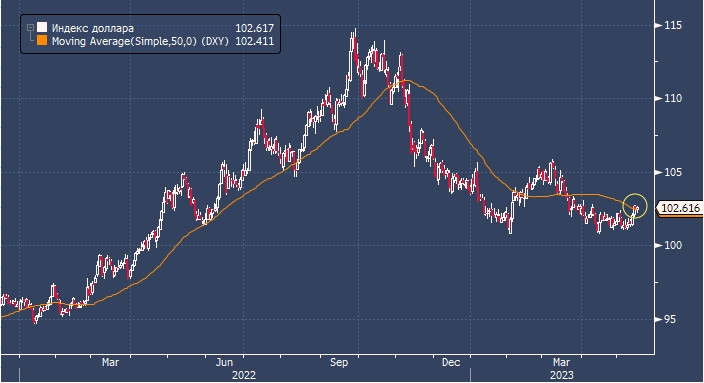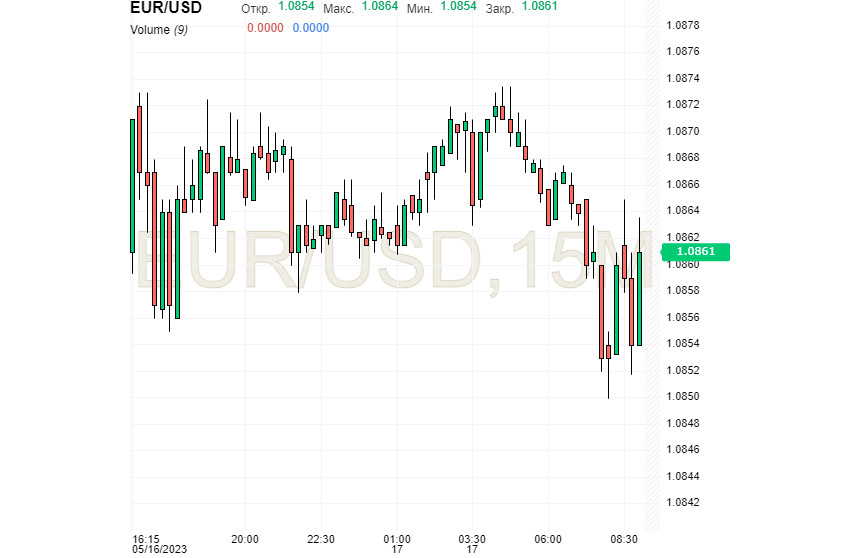
The unstable performance of the US currency observed this week can be attributed to the ambiguous economic situation. On the one hand, the greenback is under pressure from uncertainty over the debt ceiling, while on the other, a sharp euro upsurge has once again pushed USD downwards. However, the euro's triumph was short-lived, and the US dollar is expected to strike back.
Analysts believe the sharp rebound of USD is due to the lack of a compromise on raising the debt ceiling in the US. Currently, this issue remains a hot topic, and talks are continuing.
On Tuesday, May 16, another meeting between US President Joe Biden and representatives of the US Congress took place at the White House. However, both parties failed to reach an agreement. According to Republican congressman Kevin McCarthy, Speaker of the House of Representatives, both parties may reach an agreement by the end of the week, but they are currently far apart. As a result, the risk of a US default is increasing, and Bloomberg noted it as being "higher than ever"
The key issue in the discussions is whether Republicans will vote for raising the debt ceiling. Analysts think this is unlikely. The situation was further inflamed by remarks by former US President Donald Trump, who urged the Republican Party to let the default happen.
Trump's comments made the default due to the deadlock between the White House and House Republicans more likely. Such a scenario would deter opening long positions. Experts note that current political risks are weakening the US currency. As the crisis worsens, investors are forced to flee to safe-haven assets, primarily USD.
The greenback has been supported by the constant inflow of foreign money, which allows the American economy to stay afloat. In this way, investors are protecting their capital. Some USD imbalance is confirmed by the popular dollar smile theory, which suggests that the US currency rises in two cases - when the national economy is either very strong or very weak. So far, the slowdown has been gradual, and this aligns with the US dollar sliding down. According to analysts, the current prospects of the American economy are somewhat gloomy, and this will help the US dollar take advantage of this pattern.

Currency experts at Barclays predict a prolonged economic slump that will affect the entire globe, driving markets back to the weaker side of the so-called "dollar smile". Specialists think this situation could become reality soon, but they do not see it as the most likely outcome.
The dollar's recent upside movement was fuelled by a large-scale sell-off, leading experts to predict that USD could a bounce back and retrace further. The ongoing debt ceiling troubles and recent aggressive interest rate cuts, now shifting to an increase, continue to weigh on the dollar. In these conditions, a US default is seen as the most probable scenario. However, experts believe that the US economy will teeter between the onset of default and stability. This puts further dollar strength into doubt, conclude analysts.
Commerzbank's currency strategists suggest that USD will stay under pressure unless the debt ceiling issue is resolved. Right now, the dollar is showing signs of recovery. The past week was a good one for the dollar, strengthening its upward trend. For the first time in two months, the dollar index (USDX) traded above its 50-day average, confirming the uptrend.

The future direction of the Federal Reserve's monetary policy, which is set to hike the key interest rate, plays a significant role in the USD's trajectory. The short-term bounce of the dollar was triggered by the rate hike, as the Federal Reserve took a hawkish stance that it still maintains.
According to Loretta Mester, the President of the Fed Reserve Bank of Cleveland, the regulator has already reached the rate pause level but needs more proof that inflation is decreasing. Fed officials believe that inflation is still too high and that they should stick to the chosen path. Earlier, Thomas Barkin, President of the Richmond Fed, stated he doesn't mind rate increases if they are necessary to reduce inflation.
In this situation, the US currency has advanced. The USD rally was triggered by mixed macroeconomic data from the United States. According to current reports, retail sales in the country increased by 0.4% MoM in April, twice below the forecasted level. Core retail sales (excluding cars) also increased by 0.4% MoM, matching expectations. Last month, industrial production in the US rose by 0.5%, confirming market forecasts. The NAHB housing market index increased to 50 points in May from 45 points in the previous month. Despite US retail sales coming in worse than expected, industrial production exceeded experts' forecasts.
The current situation is favorable for the US dollar. According to analysts at Rabobank, the greenback will be in demand as a safe-haven asset in the near future. Another positive factor for USD will be the Fed's rate hike, which may last longer than the market expects.
In this situation, Danske Bank economists predict that EUR/USD will decline due to current trading conditions, real interest rates, and wage levels. This view is partly shared by ING bank analysts, who claim that the EUR/USD pair must remain above the 1.0800 level to avoid significant losses. A breakout below this level would indicate that market sentiment has significantly deteriorated. On Wednesday, May 17, EUR/USD was trading around 1.0861, trying to move higher.

Based on preliminary forecasts, the greenback will rise in the near future, despite the Fed pausing its rate hike and the ongoing debt ceiling crisis. ING expects the Federal Reserve to keep rates stable until 2024. In such a situation, the prospects for the US economy look less gloomy, experts conclude.
 English
English 
 Русский
Русский Bahasa Indonesia
Bahasa Indonesia Bahasa Malay
Bahasa Malay ไทย
ไทย Español
Español Deutsch
Deutsch Български
Български Français
Français Tiếng Việt
Tiếng Việt 中文
中文 বাংলা
বাংলা हिन्दी
हिन्दी Čeština
Čeština Українська
Українська Română
Română

